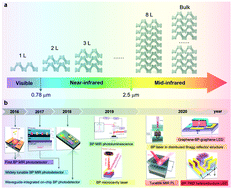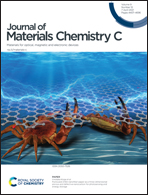Mid-infrared light-emitting properties and devices based on thin-film black phosphorus
Abstract
Mid-infrared (MIR) radiation has a wide range of applications in military, environmental monitoring, and medical treatment. Black phosphorus (BP), an emerging van der Waals (vdW) layered material, shows high carrier mobility, decent optoelectronic properties, and good compatibility with silicon technologies. In 2019, the MIR photoluminescence properties of thin-film black phosphorus were uncovered. Further studies show that the MIR photoluminescence properties can be widely tuned by temperature, thickness and external electric field, indicating BP as a promising MIR light-emitting material candidate. Optically-driven MIR lasers have been also achieved through coupling thin-film BP with well-designed micro-cavities. In addition, the realization of electrically-driven MIR light-emitting devices of BP-based vdW heterojunction further paves the way of MIR light-emitting applications in the BP-silicon hybrid on-chip systems with low cost and high integration scale. Herein, we review the recent research progress of BP MIR light-emitting properties, including the thickness-, temperature-, electric-field-dependent MIR light-emitting properties, and BP-based MIR light-emitting devices, such as MIR lasers and light-emitting diodes. The coupling between BP MIR light-emitting devices and silicon waveguide will also be discussed.

- This article is part of the themed collections: Journal of Materials Chemistry C Recent Review Articles and Journal of Materials Chemistry C HOT Papers


 Please wait while we load your content...
Please wait while we load your content...